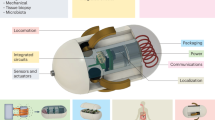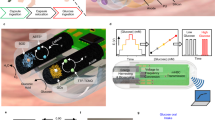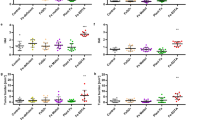Abstract
TRANSPORT processes in the small intestine are dependent on energy which suggests the participation, directly or indirectly, of adenosine triphosphate (ATP). No evidence has, however, been produced that exogenous ATP can influence intestinal transport processes, which may well result from the difficulty of getting the unstable ATP molecule to the correct place in the cellular organization before its hydrolysis occurs. A way around this difficulty is offered by the study of electrical potentials in the intestine, which are known to be associated with intestinal transfer of various substances. Potential changes can be measured within a few minutes of setting up the intestinal preparation, and appear within seconds after addition of transferable substances. They therefore appear to offer an ideal method for studying the effect of ATP on intestinal transfer.
This is a preview of subscription content, access via your institution
Access options
Subscribe to this journal
Receive 51 print issues and online access
$199.00 per year
only $3.90 per issue
Buy this article
- Purchase on SpringerLink
- Instant access to full article PDF
Prices may be subject to local taxes which are calculated during checkout
Similar content being viewed by others
References
Barry, R. J. C., Dikstein, S., Matthews, J., Smyth, D. H., and Wright, E. M., J. Physiol., 171, 316 (1964).
Krebs, H. A., and Henseleit, K., Hoppe-Seyl. Z. Physiol. Chem., 210, 33 (1932).
Newey, H., Sanford, P. A., and Smyth, D. H., J. Physiol., 168, 423 (1963).
Barry, R. J. C., Eggenton, J., Smyth, D. H., and Wright, E. M., J. Physiol., 182, 40P (1965).
Author information
Authors and Affiliations
Rights and permissions
About this article
Cite this article
KOHN, P., NEWEY, H. & SMYTH, D. Electrical Potential across the Rat Small Intestine stimulated by Adenosine Triphosphate. Nature 215, 1395 (1967). https://doi.org/10.1038/2151395a0
Received:
Issue date:
DOI: https://doi.org/10.1038/2151395a0



